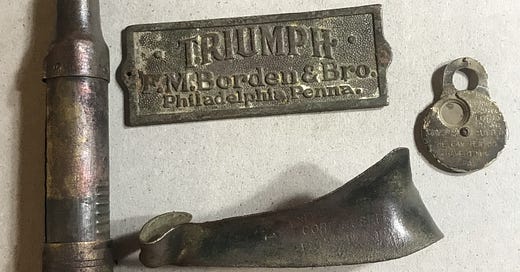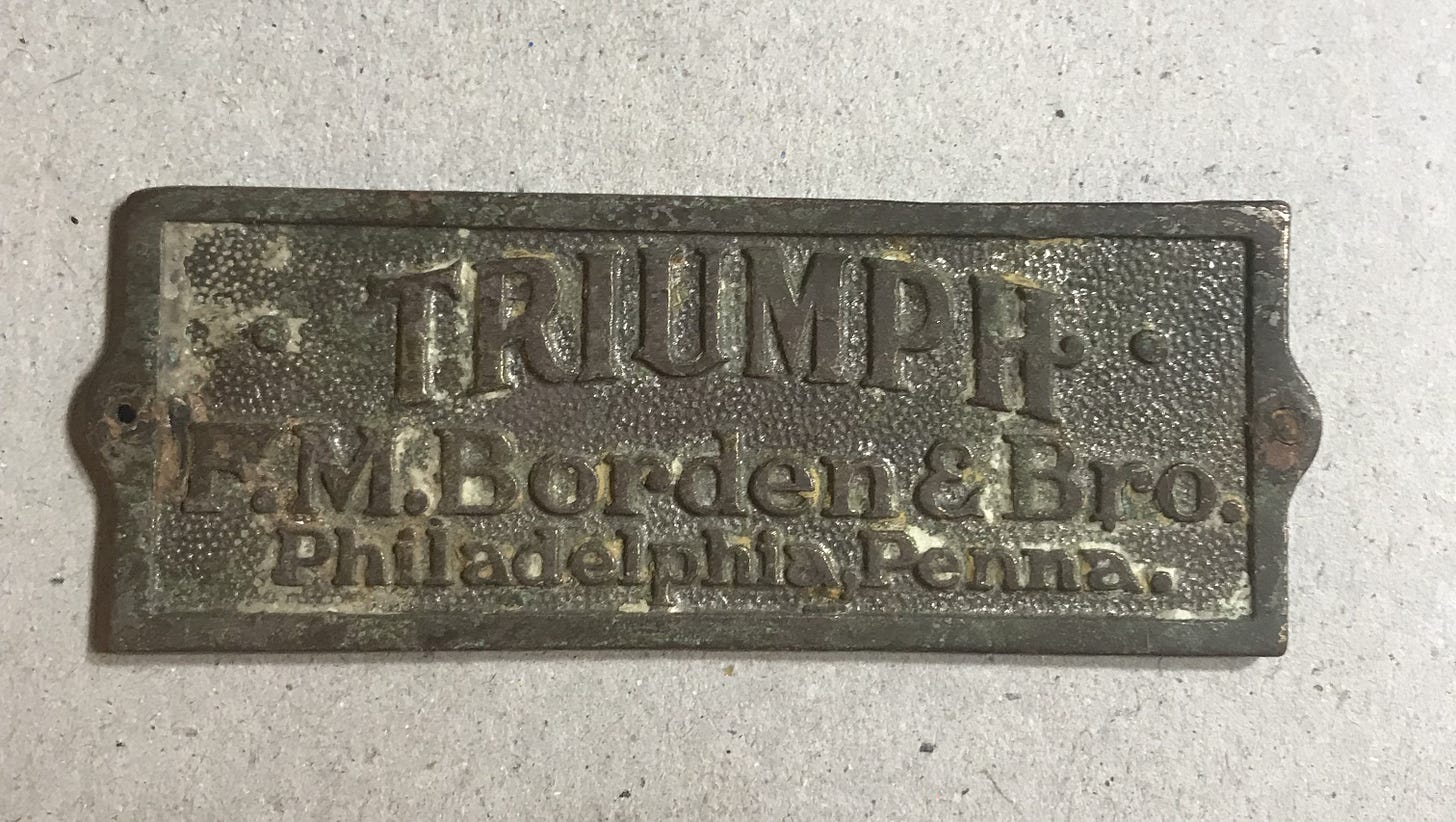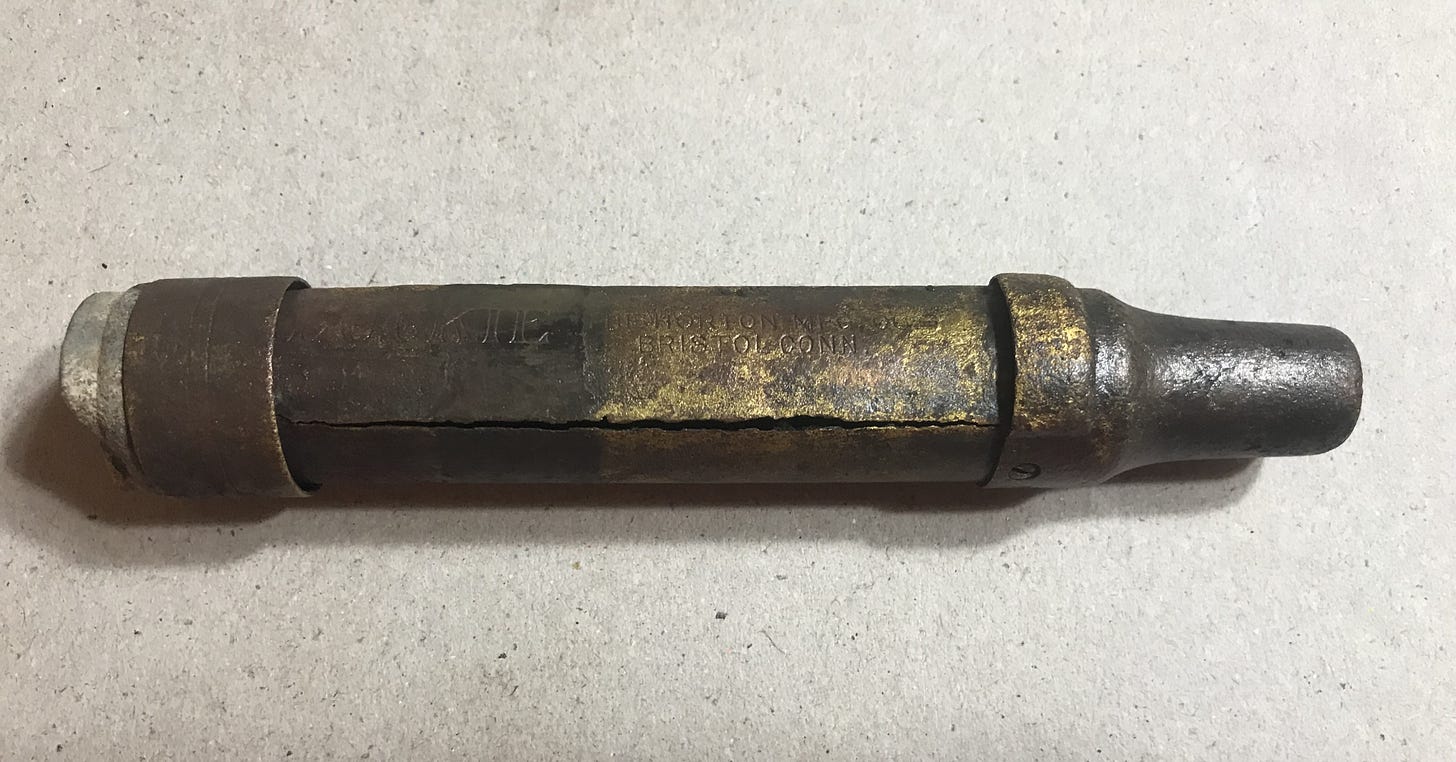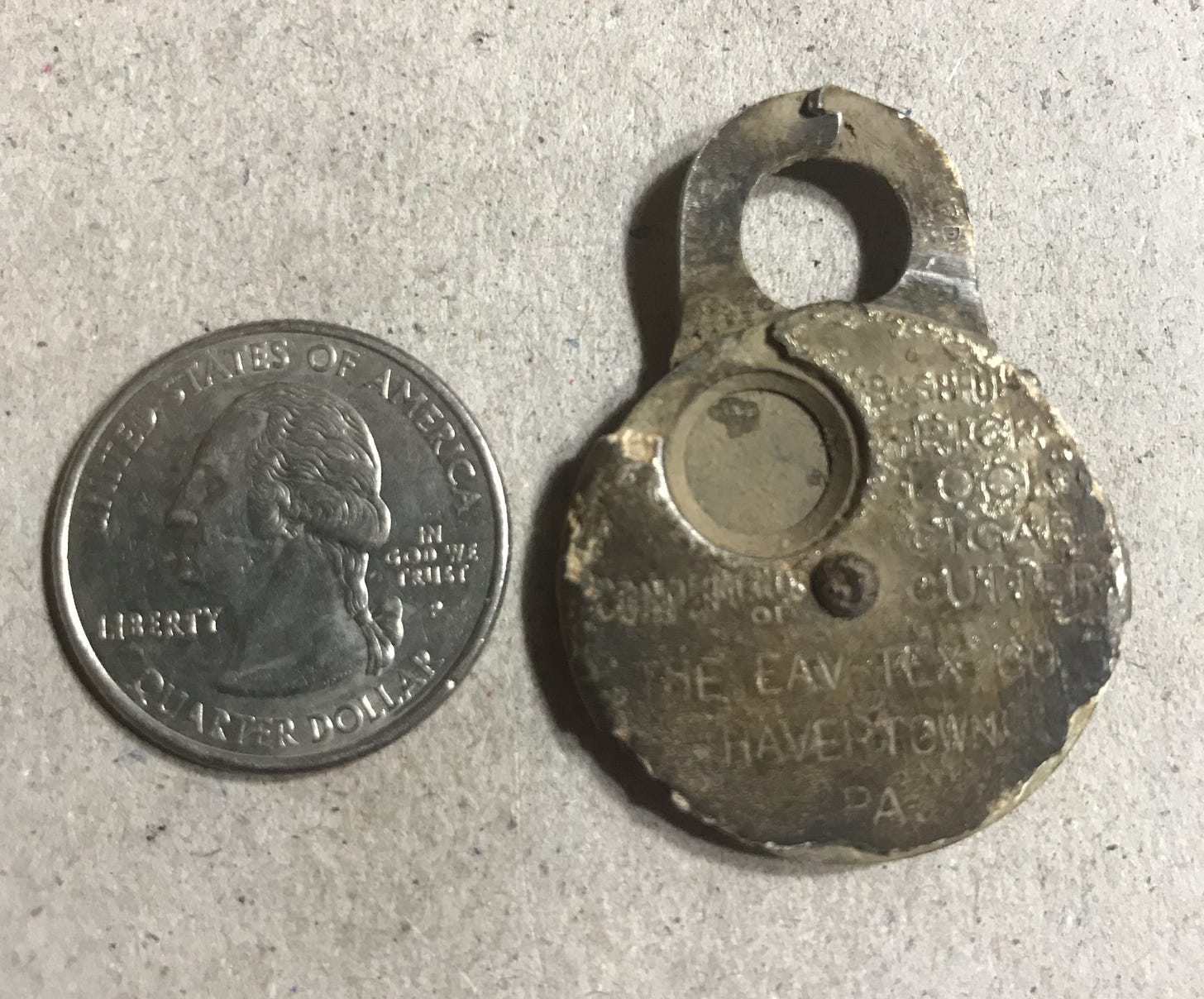Odds and Ends
The first object today is an identification plate from the F.M. Borden and Bro., Philadelphia, Penna., which made wood and coal stoves and heaters. This particular plate came from a Triumph model, which I gather was a late 1800’s stove.
Next up is a very old fishing rod handle from 1916-1952. This would have been a rod that could be broken down into four sections for transport or storage in a canvas carry case, and then quickly put back together for fishing. The model is Luckie, made by the Horton Manufacturing Company in Bristol, Connecticut. I believe this one is from the early 1920’s. I found this years ago while creek detecting in Central Pennsylvania. The handle appears to be brass, and would have attached to a cork butt section on one end and the rod on the other. The reel would have been seated in the upper ring (on the right in this photo), and then the lower ring would twist to hold it tight.
This lovely old cornhusker is a very interesting piece, and I urge you to look up a video on YouTube if you’ve never seen one in use. There was a piece of leather attached to it, and you slid it over your hand so you didn’t actually have to hold it constantly, which helped prevent muscle fatigue as you worked your way through acres of corn, stripping the husks off as fast as you could walk. Before the advent of mechanized corn pickers, farmers had to harvest their corn by hand and corn huskers of different varieties (this is a palm hook style husker) would make the job easier on the hands as well as increasing output dramatically over unaided manual husking.
Farmers would husk the ear of corn while it was still on the stalk in the field and throw it into a wagon pulled by horses or oxen. Being able to husk at the same rate as the wagon was pulled was quite an accomplishment.
There are other husking aids, including the husking thimble, which was patented in 1856 and consisted of a thimble-like device that fit over your thumb and had a point to help separate and remove the husks. There are five main categories of husking aids, including pegs, thumb hooks, palm hooks, wrist hooks, and other aids (gloves, wrist bands, and protectors of the thumb and fingers.)
The final object for today’s post is a Bashful Trick Lock Cigar Cutter, made in 1915. This particular cutter is inscribed with “Compliments of Eav-Tex Co. Havertown PA.” I googled Eav-Tex, but got no hits, so I’m not sure what kind of company that was. A cigar cutter is a mechanical device that is used to cut the end off a cigar so that it can be smoked. Today, most cigars are much thicker than a cigarette, but in the early 1900’s they were about as thick as a modern cigarette, with one pointy end, which is the one that was cut off.
What makes this a trick cigar cutter is that it has a pin that locks the cutting mechanism in the closed position, and no amount of pulling or forcing will release it for use. The secret was to turn the lock upside down (with the hasps facing downward), which released the pin and allowed the mechanism to open. You then inserted the tip of the cigar, pulled the two halves of the hasp together, cutting the cigar tip. Turning the lock with the hasps facing up allowed the pin to fall again, locking the mechanism. Unfortunately, this one has been in the ground so long that it no longer works.









